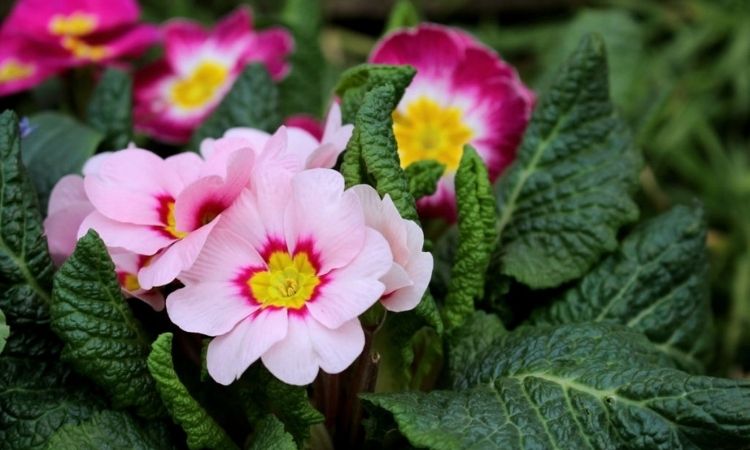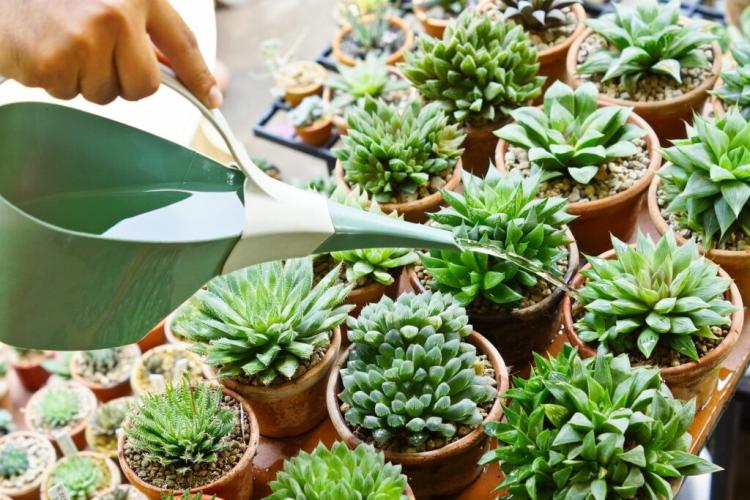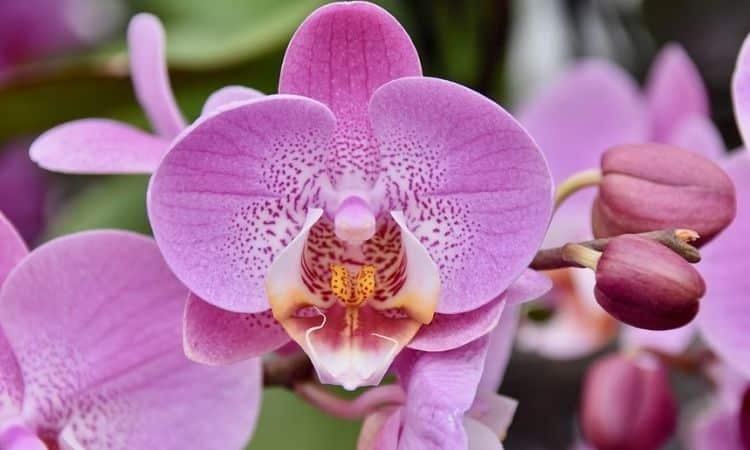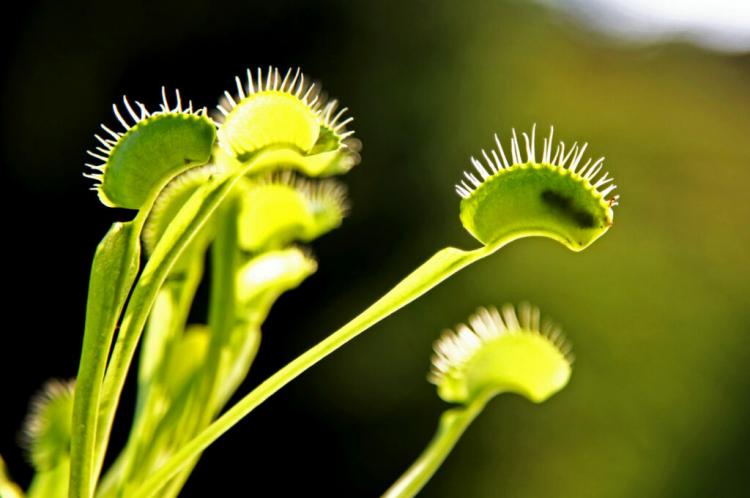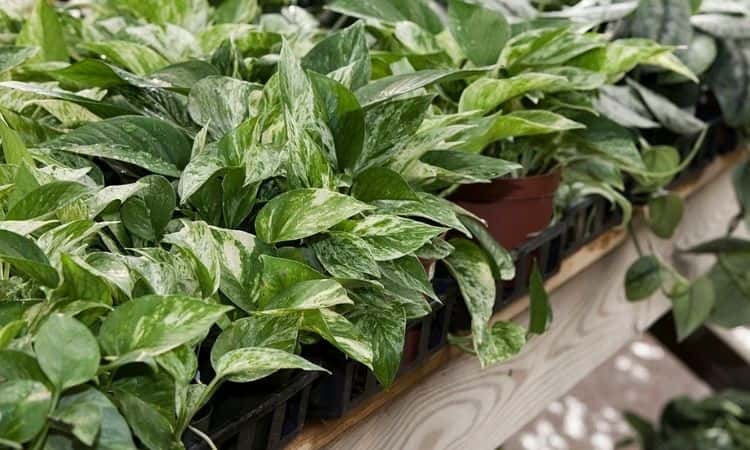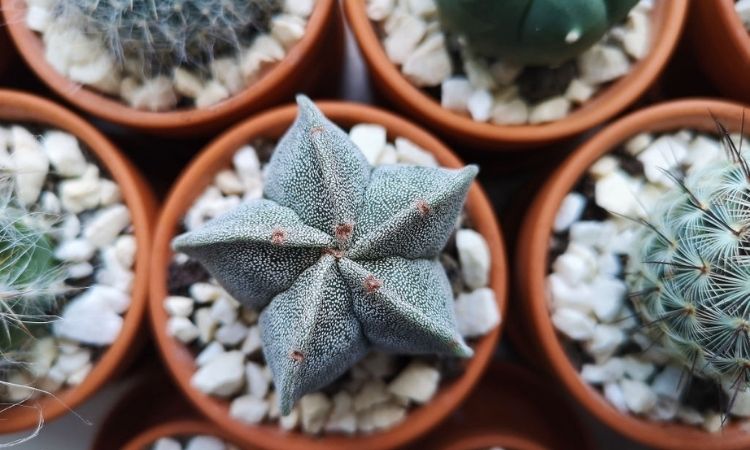Ficus Ginseng: Planting And Care Of Chinese Fig
A tree on the windowsill? This is possible with the Ficus Ginseng. We show you how it works and how to properly care for the Chinese fig. The Ficus Ginseng (Ficus microcarpa) is a popular type of bonsai with a modern yet Far Eastern flair. With its dense and compact growth and decorative dark green leaves, the Ficus Ginseng will fit in any home. We show you what you should pay attention to when caring for it.
Ficus Ginseng: Origin and characteristics
Table of Contents
Just as diverse as the forms that can take Ficus microcarpa, are the synonyms under which the bonsai is known. The name most commonly used in our country is Ficus Ginseng. This name is derived from the particularly thick root of the Ficus, which resembles a ginseng root (Panax ginseng) in shape. However, Ficus microcarpa is also often called Ficus microcarpa-ginseng, Chinese fig, Indian laurel, or bay fig.
Originally, the bay fig comes from the subtropical regions of Southeast Asia and Australia. In its natural habitat, the tree reaches a height of about 30 meters. Ficus microcarpa naturally branches very strongly and is also particularly pruning tolerant. This results in good suitability for cultivation as a bonsai. This involves raising cuttings, a single severe pruning, and then repeated topiary, plus a severe reduction in root space.
The result is a Ficus Ginseng in the size of 150 to 450 inches, as it can be purchased in the garden center. In the case of particularly small saplings, the Ficus Ginseng is cut off just above the root when it is about ten years old and a species-specific shoot is grafted onto it. The decoratively curved base of the plant is not actually a stem, but part of the root.
The leaves are dark green in color with a slight sheen on the top of the leaf. If visible, the trunk is covered with a brown to gray bark. As a rule, the Chinese fig as a bonsai in an apartment does not bloom. However, even without flowers, the plant is beautiful to look at. If Ficus Ginseng does form flowers, they are small and inconspicuous at the leaf axils.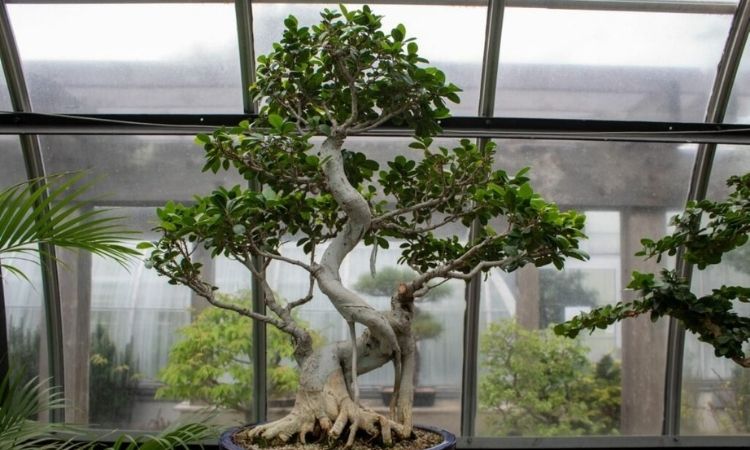
Planting Ficus Ginseng
Since most Ficus microcarpa ginsengs are cultivated as bonsai or at least in the style of a bonsai, the planter is an important part of the appearance and proper care. As a rule of thumb, the shallower the tray, the more frequently it will need to be watered and the more important it is to choose a high quality, structurally stable substrate that will not slump. And further, the smaller the planter, the weaker the Ficus Ginseng will grow, and the easier it will be to keep as a bonsai.
That’s why bonsai bowls are shallow and offer little room for the roots to develop. If you want to water less often and use normal soil, you can choose a larger bowl. This should be at least half as high as it is wide and provide room for the roots to develop. Keep in mind, however, that a Ficus Ginseng in a large bowl may soon no longer be a small bonsai.

The suitable location for the Chinese fig
Ficus microcarpa feels most comfortable in a bright location without direct sunlight. A normal room temperature of 59 to 64 °F is just right for the period between March and October until overwintering. The Chinese fig does not tolerate strong drafts or temperature fluctuations. The Ficus Ginseng is therefore also well suited as a plant in the bedroom. In midsummer, the Ficus can also be cultivated outdoors, but only if temperatures do not drop below 59 °F at night and it can be protected from direct sunlight.
Planting procedure
Since a relatively small planting container is often chosen in relation to the plant, the quality and, above all, stability of the planting substrate is particularly important. The Ficus Ginseng requires soil with high water storage capacity and at the same time good aeration. A mixture of high-quality planting soil, lava chippings, and soil in equal parts are recommended. Also possible is the mixture of loose herbal soil or seeding soil, akadama, and pumice in the ratio 2:1:1.
Care of Ficus Ginseng
Above all, an adapted water supply and a good supply of nutrients are important for the successful care of Ficus Ginseng. Increased humidity, for example, by weekly spraying with low-lime water or by a location in the bathroom, has a positive effect on the health of the Ficus Ginseng. However, the Chinese fig is rarely affected by plant diseases anyway. The infestation of Ficus Ginseng by pests is also rather rare.
Watering Ficus Ginseng
Watering is one of the key points for the successful care of Ficus microcarpa ginseng. Because of the small planting container, the substrate dries out quickly, but should always be kept moderately moist. Usually, the right time for watering is when the substrate has dried on the surface. Rainwater is best suited for watering. If you do not have this on hand, mineral water is also a good alternative. Lime-containing tap water is not recommended, as this can cause unsightly lime deposits on the planter. How to water your bonsai properly, we have compiled in our special article for you.

Fertilize Ficus Ginseng
Fertilizing with a liquid fertilizer is particularly important when cultivating Ficus Ginseng – as with all bonsais. Especially in the period from March to September, due to the growth and the small amount of substrate, care should be taken to ensure a good supply of nutrients. During this time, a fertilizing interval of once a week or every two weeks is very good.
More helpful tips, on the subject of fertilizing bonsai, can be found in our special article. In winter, an interval of one fertilization per month is quite sufficient for the Ficus Ginseng due to the reduced growth.
Pruning Ficus Ginseng
Regular pruning is very important when cultivating a bonsai. If you have chosen a Ficus ginseng bonsai that is already in shape, pruning is made easy. As a guideline for pruning in the spring, no later than when a shoot has formed eight new leaves, it should be cut in half. If you feel that the crown is getting too large overall, the plant can be pruned more. Since Ficus Ginseng is very tolerant of pruning, it is also forgiving of cuts to perennial wood. You can find more detailed information on the subject of pruning bonsai in our article.
Ficus ginseng loses leaves: what to do?
Lack of light or a change of location are common causes when your Ficus Ginseng loses green leaves. If you have purchased your Ficus Ginseng new or placed it in a new location, moderate leaf loss is normal. This will stop after a few weeks. If lack of light could be the cause, a brighter location should be chosen and the Ficus Ginseng should be left in the new location for at least four weeks. If there is no improvement, the water supply could be the cause. This is because leaf loss also occurs in dry or waterlogged conditions. If the soil always feels very moist or smells musty, you should reduce the water supply. If the substrate is dry, on the other hand, watering should be more frequent.
If the leaves of Ficus Ginseng have become lighter in color or are turning yellow, a more frequent application of fertilizer or repotting may help.
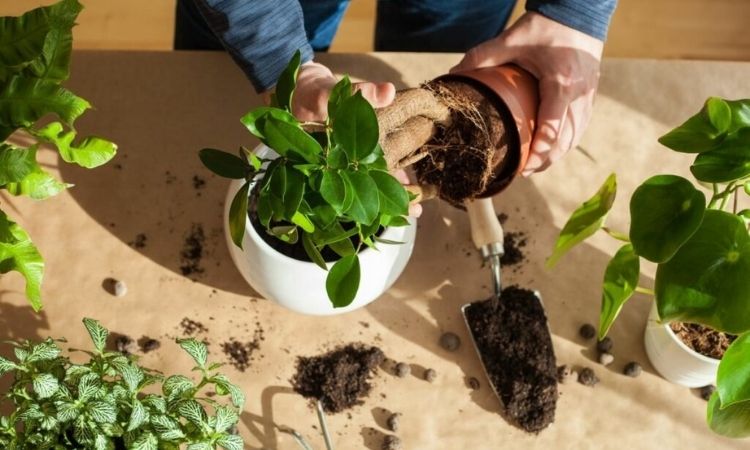
Wintering of Ficus Ginseng
Ficus microcarpa ginseng is uncomplicated to overwinter. A slightly cooler room such as a guest room, stairwell or the bedroom is very suitable. The optimum temperature is 60 to 64 °F. A bright location is also important in the winter quarters. However, a windowsill above a heater is not recommended due to the very dry air.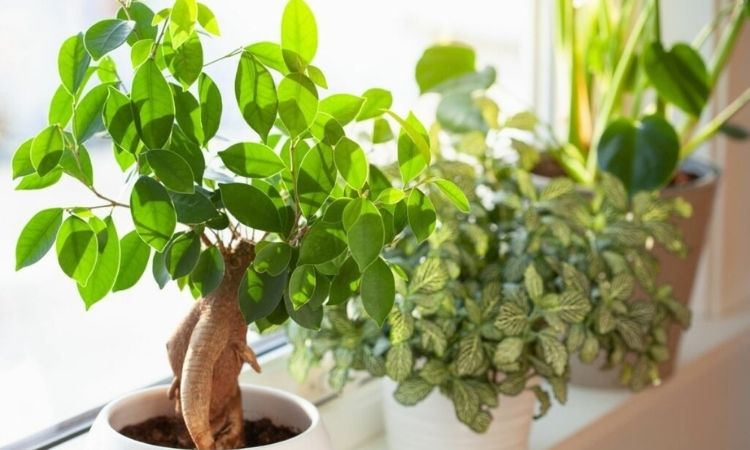
Is the Ficus Ginseng poisonous?
All parts of the Ficus Ginseng plant are poisonous. Therefore, it is important to be careful that children or pets do not swallow leaves or other plant parts. Nausea and gastrointestinal distress are common symptoms.
Ficus ginseng is also toxic to pets – especially rodents, cats, and dogs – and can even be life-threatening. When cutting and caring for Ficus Ginseng, be careful not to let your skin or mucous membranes come into contact with the white sap, as this could cause skin irritation. The rubber tree also belongs to the genus Ficus and is a popular houseplant.
We show you how to properly care for rubber trees.

